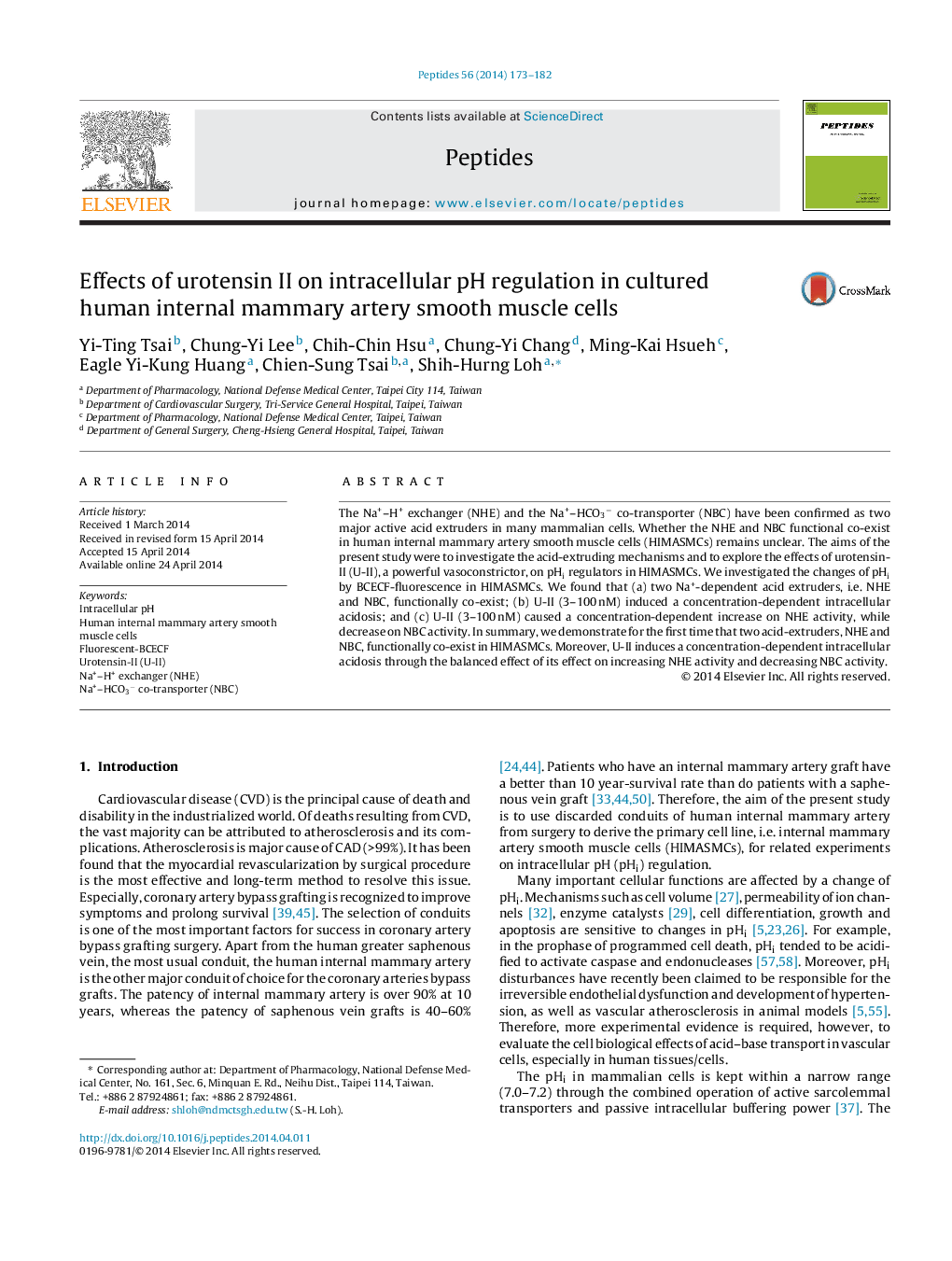| Article ID | Journal | Published Year | Pages | File Type |
|---|---|---|---|---|
| 2006076 | Peptides | 2014 | 10 Pages |
•Two Na+-dependent acid extruders, i.e. NHE and NBC, functionally co-exist in human internal mammary artery smooth muscle cells.•U-II (3–100 nM) induces a concentration-dependent intracellular acidosis.•U-II (3–100 nM) increases a concentration-dependent NHE activity.•U-II (3–100 nM) causes a concentration-dependent decrease of NBC activity.
The Na+–H+ exchanger (NHE) and the Na+–HCO3− co-transporter (NBC) have been confirmed as two major active acid extruders in many mammalian cells. Whether the NHE and NBC functional co-exist in human internal mammary artery smooth muscle cells (HIMASMCs) remains unclear. The aims of the present study were to investigate the acid-extruding mechanisms and to explore the effects of urotensin-II (U-II), a powerful vasoconstrictor, on pHi regulators in HIMASMCs. We investigated the changes of pHi by BCECF-fluorescence in HIMASMCs. We found that (a) two Na+-dependent acid extruders, i.e. NHE and NBC, functionally co-exist; (b) U-II (3–100 nM) induced a concentration-dependent intracellular acidosis; and (c) U-II (3–100 nM) caused a concentration-dependent increase on NHE activity, while decrease on NBC activity. In summary, we demonstrate for the first time that two acid-extruders, NHE and NBC, functionally co-exist in HIMASMCs. Moreover, U-II induces a concentration-dependent intracellular acidosis through the balanced effect of its effect on increasing NHE activity and decreasing NBC activity.
Graphical abstractFigure optionsDownload full-size imageDownload as PowerPoint slide
